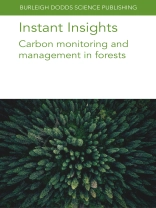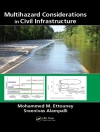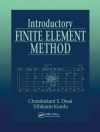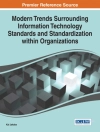- Explores the interactions between tropical forests and the immediate climate, as well as the role of tropical forests in the global carbon cycle
- Highlights the development and submission of Action Plans for Reducing Emissions from Deforestation and Forest Degradation (REDD+) by a range of countries
- Considers the debate surrounding whether forests should be classified as sources or sinks of carbon
Daftar Isi
- Chapter 1 – Optimizing forest management for soil carbon sequestration: Andreas Schindlbacher, Federal Research and Training Centre for Forests, Natural Hazards and Landscape (BFW), Austria; Mathias Mayer, Swiss Federal Institute for Forest, Snow and Landscape Research (WSL), Switzerland and University of Natural Resources and Life Sciences (BOKU), Austria; Robert Jandl, Federal Research and Training Centre for Forests, Natural Hazards and Landscape (BFW), Austria; and Stephan Zimmermann and Frank Hagedorn, Swiss Federal Institute for Forest, Snow and Landscape Research (WSL), Switzerland;
- 1 Introduction
- 2 Forest management and soil carbon sequestration
- 3 Case study: forest soil carbon storage in Central Europe mountain regions
- 4 Conclusion
- 5 Future trends in research
- 6 Where to look for further information
- 7 References
- Chapter 2 – The contribution of agroforestry systems to improving soil carbon sequestration: Lydie-Stella Koutika, Research Centre on the Durability and the Productivity of Industrial Plantations (CRDPI), Republic of the Congo; Nicolas Marron, UMR 1434 Silva, INRAE Grand- Est Nancy, Université de Lorraine, Agro Paris Tech 54000 Nancy, France; and Rémi Cardinael, AIDA, University of Montpellier, CIRAD, Montpellier, France, CIRAD, UPR AIDA, Harare and University of Zimbabwe, Zimbabwe;
- 1 Introduction
- 2 Improved soil carbon sequestration in agroforestry relative to other systems
- 3 Factors driving soil carbon sequestration in agroforestry systems
- 4 Other co-benefits of sequestering soil carbon in agroforestry systems
- 5 Barriers to improving soil carbon sequestration in agroforestry systems
- 6 Recommendations
- 7 Conclusion
- 8 Where to look for further information
- 9 References
- Chapter 3 – Advances in monitoring and reporting forest emissions and removals in the context of the United Nations Framework Convention on Climate Change (UNFCCC): Marieke Sandker and Till Neeff, Food and Agriculture Organization of the United Nations (FAO), Italy;
- 1 Introduction
- 2 Summary of UNFCCC FREL/FRLs
- 3 Summary of REDD+ results reported to the UNFCCC
- 4 Outlook: whats next on MRV for forests?
- 5 References
- Chapter 4 – Advances in understanding the role of forests in the carbon cycle: Matthew J. Mc Grath and Anne Sofie Lansø, Laboratoire des sciences du climat et de l’environnement, France; Guillaume Marie, Vrije Universiteit Amsterdam, The Netherlands; Yi-Ying Chen, Academia Sinica, Taiwan; Tuomo Kalliokoski, University of Helsinki, Finland; Sebastiaan Luyssaert and Kim Naudts, Vrije Universiteit Amsterdam, The Netherlands; Philippe Peylin, Laboratoire des sciences du climat et de l’environnement, France; and Aude Valade, Ecological and Forestry Applications Research Centre, Spain;
- 1 Introduction
- 2 The importance of forest carbon content
- 3 Monitoring forest carbon
- 4 Mechanisms driving forest carbon storage
- 5 Are forests sources or sinks of carbon?
- 6 Carbon management as distinct from climate management
- 7 Future trends and conclusion
- 8 Acknowledgements
- 9 Where to look for further information
- 10 References
- Chapter 5 – Climate change and tropical forests: Rodney J. Keenan, The University of Melbourne, Australia;
- 1 Introduction
- 2 Tropical forests and the global carbon cycle
- 3 Other climate effects of tropical forests
- 4 Changing climate in the tropics
- 5 Climate change impacts on tropical forests
- 6 Future tropical forest management: mitigation and adaptation to climate change
- 7 Future trends
- 8 Conclusion
- 9 Where to look for further information
- 10 References
Tentang Penulis
Lydie-Stella Koutika is a soil scientist working at Research Centre on Productivity and Sustainability of Industrial Plantations (CRDPI) at Pointe-Noire, Republic of the Congo. She is a member of Scientific and Technical Committee (STC) of the ‘4 per 1000’ “Soils for food security and climate Initiative” since 2016. She is a laureate of ‘African Union Kwame Nkrumah Regional Scientific Award for Women’ (2014) and The World Academy of Science (TWAS) -Al-Kharafi Prize (2018). She has published >45 peer-reviewed journal papers and some book chapters.
Beli ebook ini dan dapatkan 1 lagi GRATIS!
Bahasa Inggris ● Format EPUB ● Halaman 178 ● ISBN 9781835450031 ● Ukuran file 9.9 MB ● Penerbit Burleigh Dodds Science Publishing ● Kota Cambridge ● Negara GB ● Diterbitkan 2024 ● Diunduh 24 bulan ● Mata uang EUR ● ID 9382253 ● Perlindungan salinan Adobe DRM
Membutuhkan pembaca ebook yang mampu DRM












